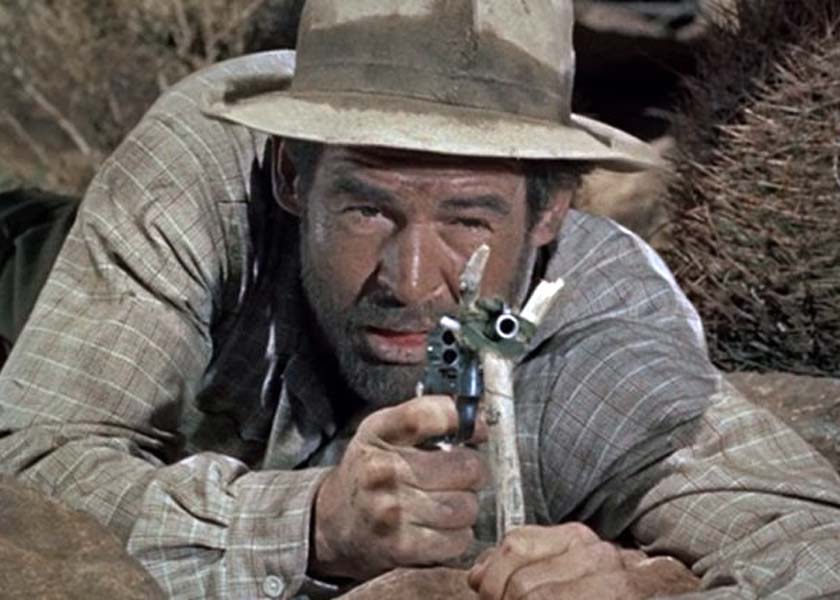Synopsis
While traveling through a remote canyon in the scorching Mojave Desert, Donald Whitley Carson III (Ryan), rich, hard drinking, spoiled, and unpleasant, falls from his horse and breaks his leg. His wife Gerry (Fleming), and a mining geologist, Joseph Duncan (Lundigan), leave him with a canteen of water, a pistol, and a small amount of food. They tell him that they are going for help. However, Duncan is Gerry's lover, and their report at the office of the trail outfitters does not include the accident or his correct location. He is not found during searches, and his business associates and the local sheriff believe that he left the desert before his disappearance. Meanwhile, Carson realizes that Gerry and Duncan have abandoned him. He splints his leg and sets out to reach the desert floor where he can signal for help. Attempting to work his slow and painful way down the steep hillside, he runs out of water and food.
Carson's plight seems hopeless until he manages to dig a waterhole and shoot a deer. Fortified, he proceeds to the desert floor where he lights signal fires. Seeing a small plane approaching, he lights a fire and then realizes that the plane is flown by Duncan, who is looking for Carson's body and the remains of his camp, intending to bury them. Duncan, who has spotted Carson, still alive, returns later with Gerry to finish him off, however Carson is picked up by Sam Elby (Hull), a desert hermit.
Gerry attempts to take the car and leave Duncan stranded, but she crashes into a large rock. They quarrel, and Duncan starts walking toward the Mexican border, leaving Gerry to fend for herself. Crossing the desert, Duncan comes upon Carson in Elby's shack and attacks them. Duncan knocks out Elby, and he and Carson fight furiously. During the fight, they upset the stove and set the shack on fire. Both men loose consciousness in the smoke, but Elby recovers in time to pull Carson out of the fire. Duncan is killed when the burning walls collapse on him. Driving to the nearest town, the two men come upon Gerry plodding slowly along the road. Carson asks if she wishes to go with them or wait for the sheriff. Resigned to her fate, she he wearily climbs onto the back of the truck, and they drive away.
Discussion
Inferno, a three-dimensional stereoscopic (3D) film, is tense, exciting, and a marvelous showcase of Robert Ryan's talents. As the unpleasant Donald Whitley Carson III, his actions and narration hold the interest of the viewer. Alone in the desert, Carson's character changes as days pass and he struggles to survive. The self-centered and angry alcoholic, abandoned by his wife, gains personal insight, laughs at himself, and works hard without complaining. He is friendly and companionable with the hermit Sam Elby rather than demanding and condescending as he would have been previously. The increased depth perception provided by 3D helps immerse the viewer into the expansive, dry and perilous desert that Carson fights to escape.
In the early 1950s movie attendance was declining as the public — especially families — stayed home watching their new televisions. To lure audiences back into theaters, film producers introduced new film formats that could not be duplicated on the small screens of primitive TVs, including anamorphic widescreen and 3D. The 3D format reached its peak of popularity from 1952-54 in films such as Man in the Dark, House of Wax, It Came From Outer Space, and Inferno.
3D film imitates the perception of depth achieved by human sight. Two cameras, filming from slightly different angles, create two perspectives of the same scene. Both sets of footage are then projected simultaneously onto a screen. Viewers wear special glasses with lenses that block one of the two images so that each eye receives only one perspective. As with normal human sight, these separate perspectives are processed in the visual cortex, and the brain registers depth. Despite its brief popularity the 3D format was gimmicky and expensive; its usage declined quickly in the mid-1950s.

